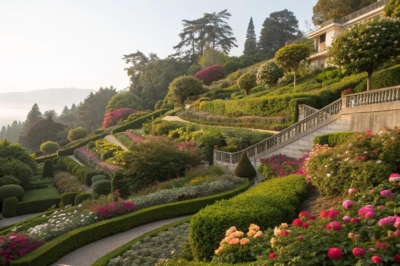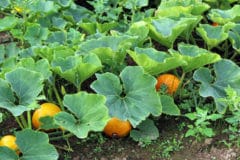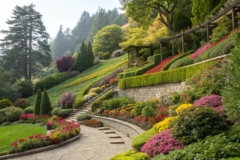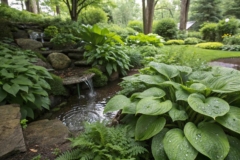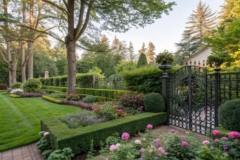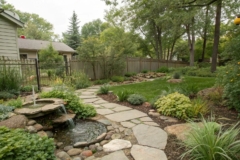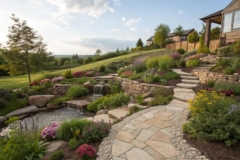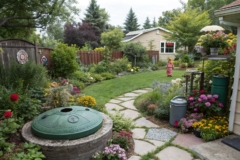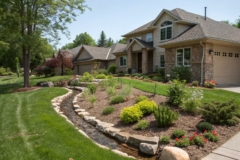1. Rock Gardens
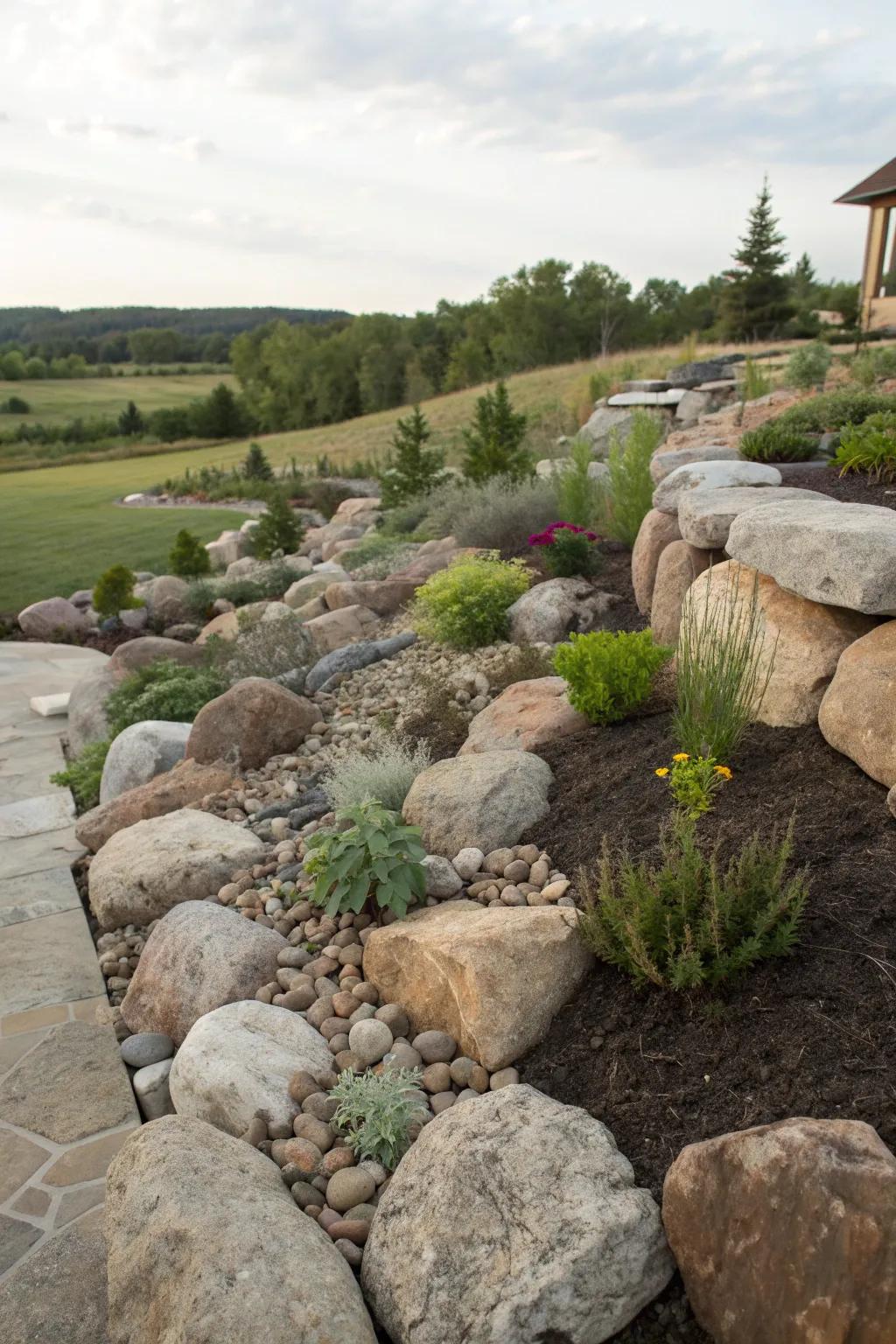
Rock gardens are a creative way to add texture and reduce soil erosion at the same time. I love designing these with a mix of stones and hardy plants for a low-maintenance solution.
A few things you might like:
- Decorative Landscape Rocks: Add texture to your garden with decorative rocks, perfect for reducing soil erosion naturally.
- Hardy Drought-Resistant Perennials: Enhance your rock garden with hardy perennials that thrive in various conditions without much water.
- Landscape Fabric for Weed Control: Ensure a tidy look by using landscape fabric to minimize weed growth in your rock garden.
2. Sturdy Retaining Walls
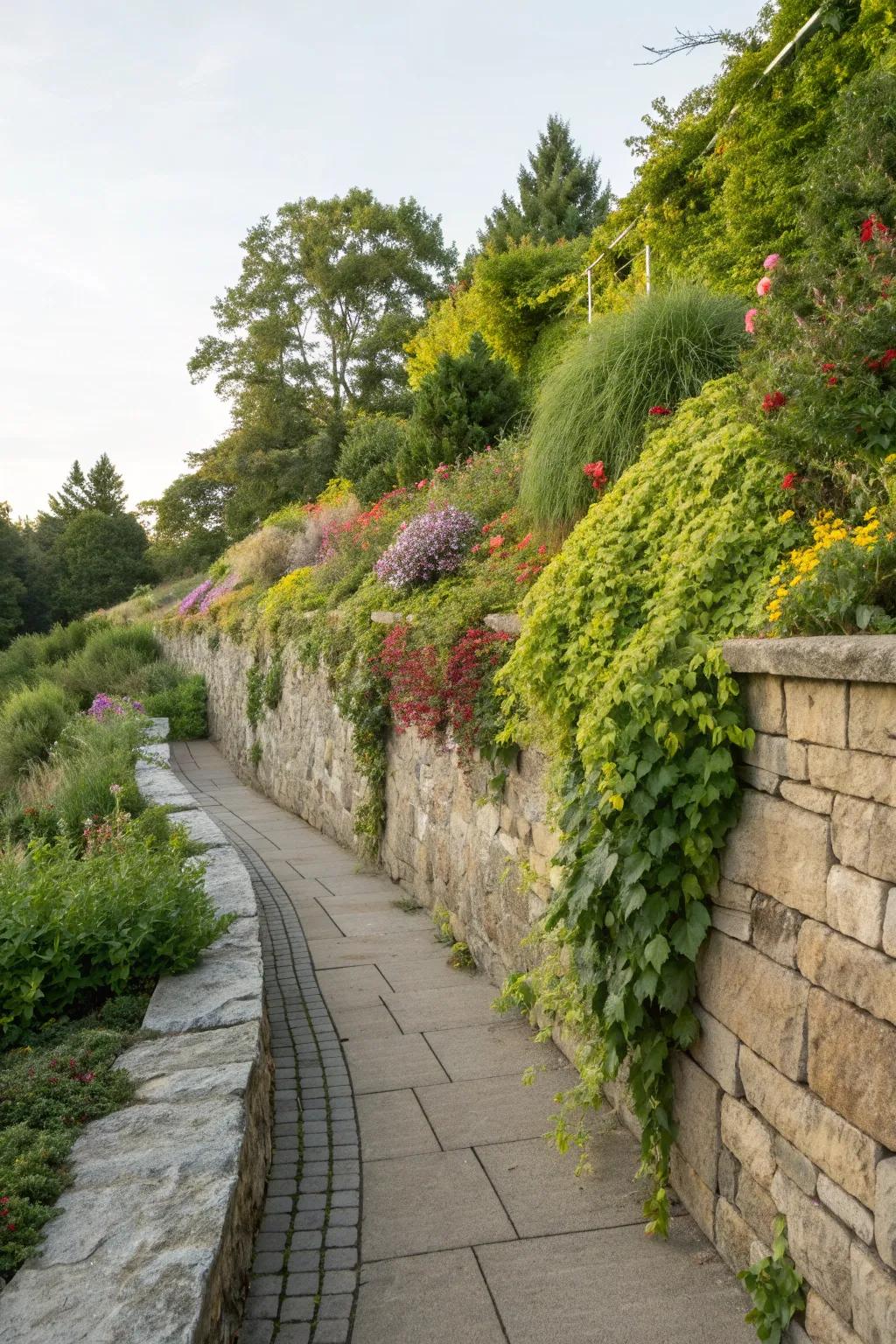
Retaining walls are the unsung heroes of erosion control, providing both stability and style. I often recommend stone or wood walls to clients for their rustic charm and effectiveness.
A few relevant products:
- Natural Stone Retaining Wall Kits: Enhance your landscape with durable stone kits for a timeless and effective retaining solution.
- Wooden Retaining Wall Boards: Create a rustic aesthetic with easy-to-install wooden boards for sturdy erosion control.
- Retaining Wall Block Systems: Build strong walls effortlessly with interlocking block systems designed for stability and style.
3. Native Plant Power
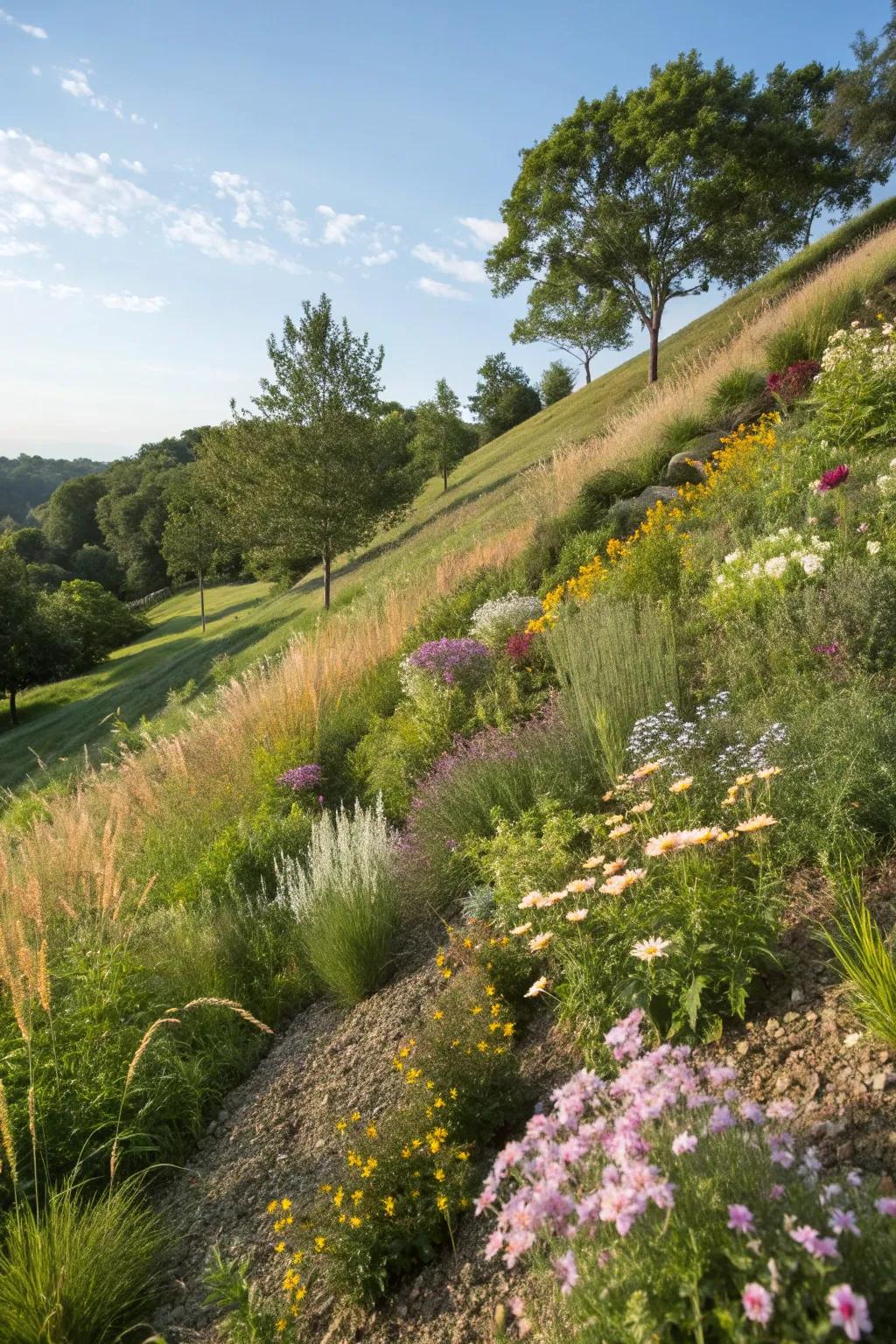
Plants native to your region are perfect for anchoring soil with their deep roots. In Austin, I’ve seen native grasses transform a dull slope into a thriving ecosystem.
A few helpful options:
- Native Seed Mix: Transform your landscape with native seeds for robust growth and effective soil stabilization.
- Garden Soil Enhancer: Enhance soil quality naturally to promote healthy root development and prevent erosion.
- Erosion Control Mat: Secure your sloped garden with a biodegradable mat, ensuring long-term soil stability.
4. Tiered Terraces
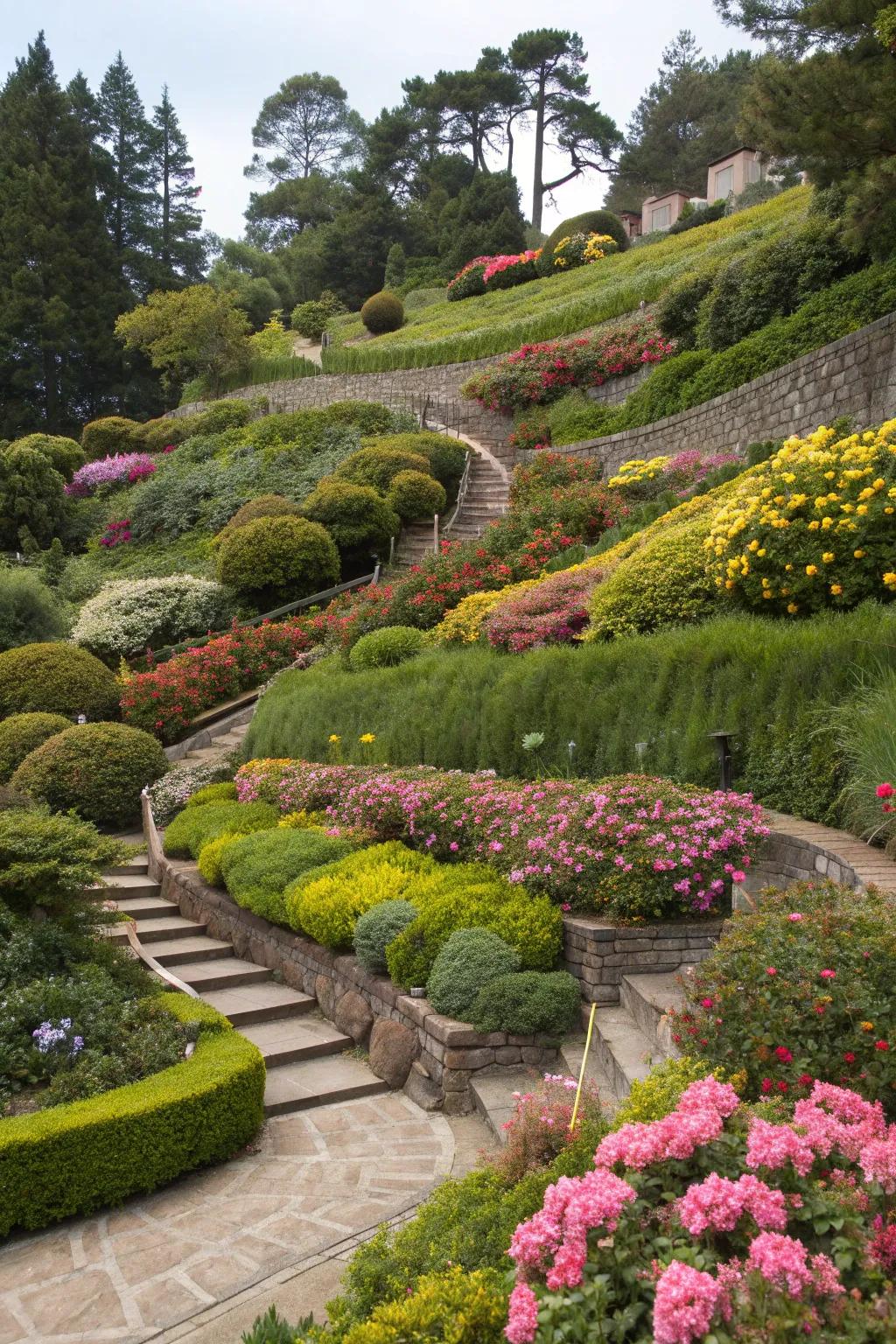
Terracing your garden is like giving it a natural facelift that also fights erosion. I’ve used this technique in my own garden, creating layers that slow down water flow and give me extra space for planting.
May just do the trick:
- Garden Retaining Wall Blocks: Enhance your terrace garden’s stability and beauty with versatile retaining wall blocks today.
- Landscape Fabric: Prevent soil erosion effortlessly by installing durable landscape fabric in your terraced garden.
- Terrace Garden Planters: Maximize planting space on terraces with stylish and practical garden planters.
5. Planting Shrubs and Trees
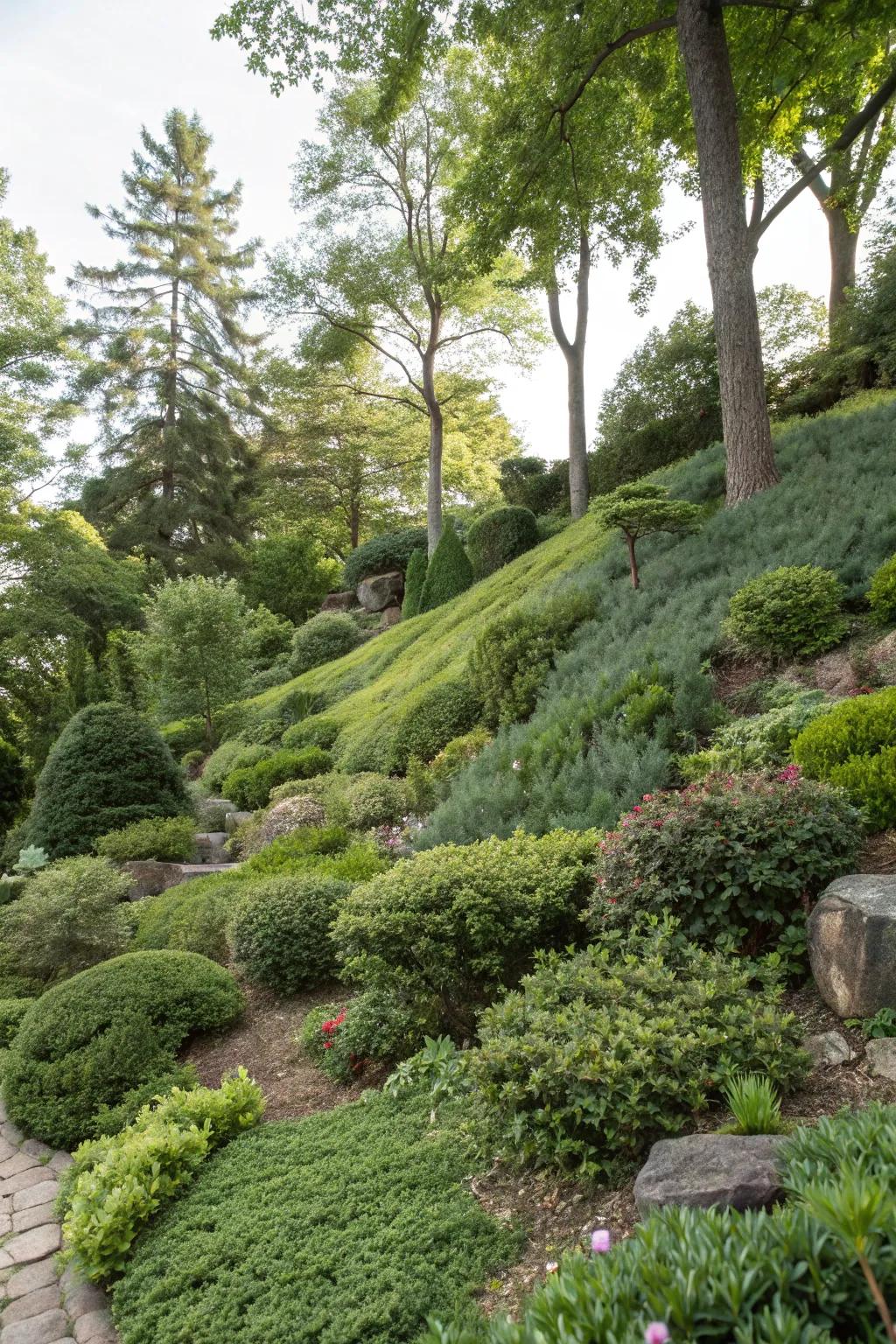
Shrubs and trees are nature’s anchors, with roots that dig deep to hold soil in place. In my garden designs, I use them to create both shade and stability.
A few suggestions:
- Evergreen Shrub Starter Kit: Enhance your landscape’s stability and beauty with this versatile evergreen shrub starter kit.
- Tree Root Growth Enhancer: Boost tree root development and soil anchorage using this specialized root growth enhancer.
- Shade Cloth for Plant Protection: Protect your newly planted shrubs and trees with this high-quality, UV-resistant shade cloth.
6. Transformative Before-and-After
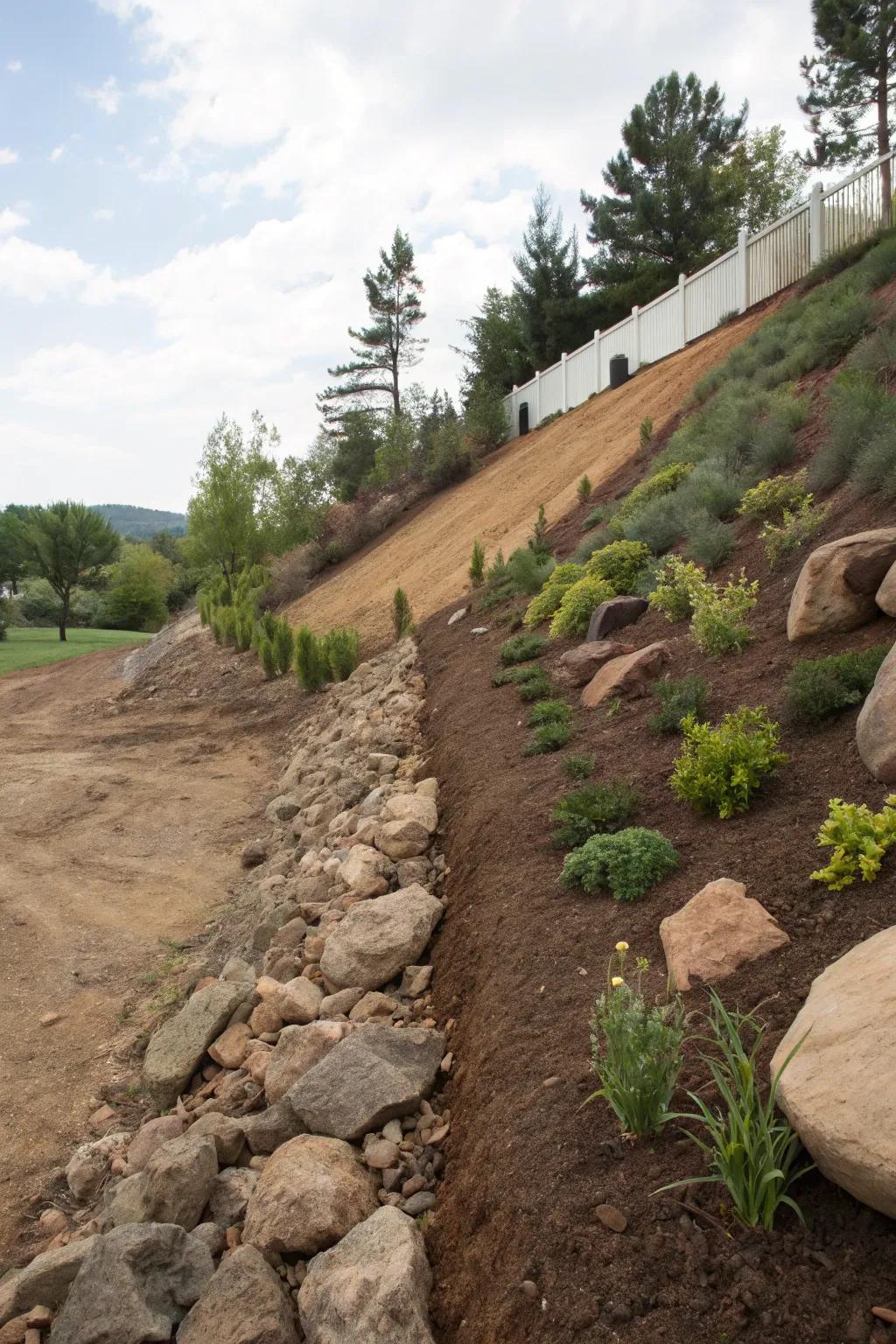
Before-and-after transformations can be incredibly inspiring. I’ve had clients amazed at how simple changes can transform an eroded space into a lush haven.
Products that could assist:
- Erosion Control Landscape Fabric: Prevent soil erosion with durable fabric. Enhance landscape stability and curb erosion effectively.
- Native Ground Cover Plants: Plant hardy ground covers. Establish vegetation quickly to stabilize and beautify erosion-prone areas.
- Rock Border Edging: Use natural rock edging. Create a solid boundary to retain soil and prevent erosion.
7. Creative Use of Riprap
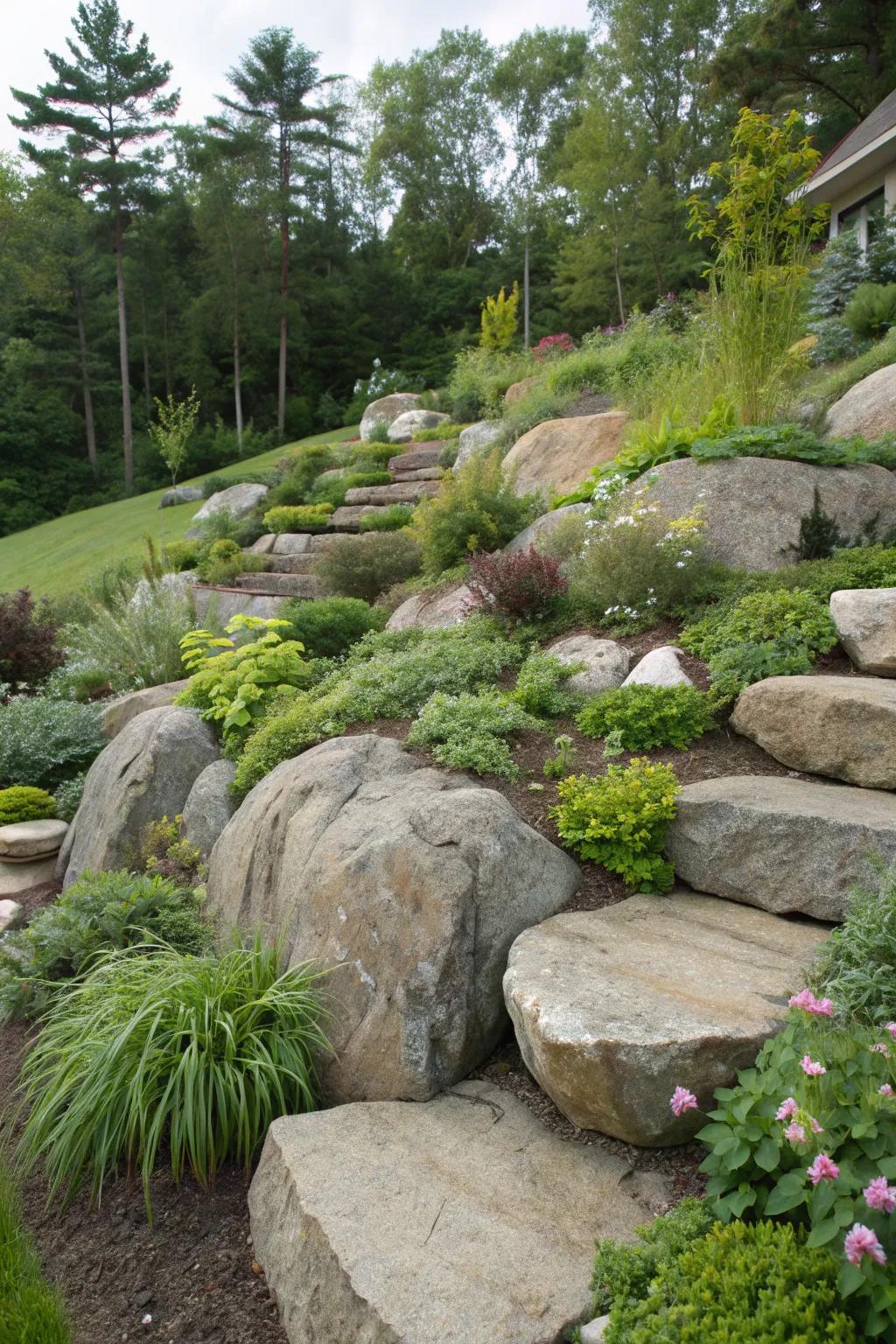
Riprap isn’t just for riverbanks; it’s a fantastic way to armor your garden slopes. By incorporating large stones, you can protect soil from water flow and create a rugged landscape feature.
Possibly handy products:
- Decorative Landscaping Stones: Enhance your garden’s rugged charm with decorative stones perfect for slope protection and aesthetics.
- Heavy-Duty Landscape Fabric: Lay this fabric under riprap to minimize weed growth and ensure effective soil erosion control.
- Erosion Control Ground Cover Plants: Plant these ground covers to complement your riprap and stabilize soil naturally in your garden.
8. Rain Gardens and Dry Riverbeds
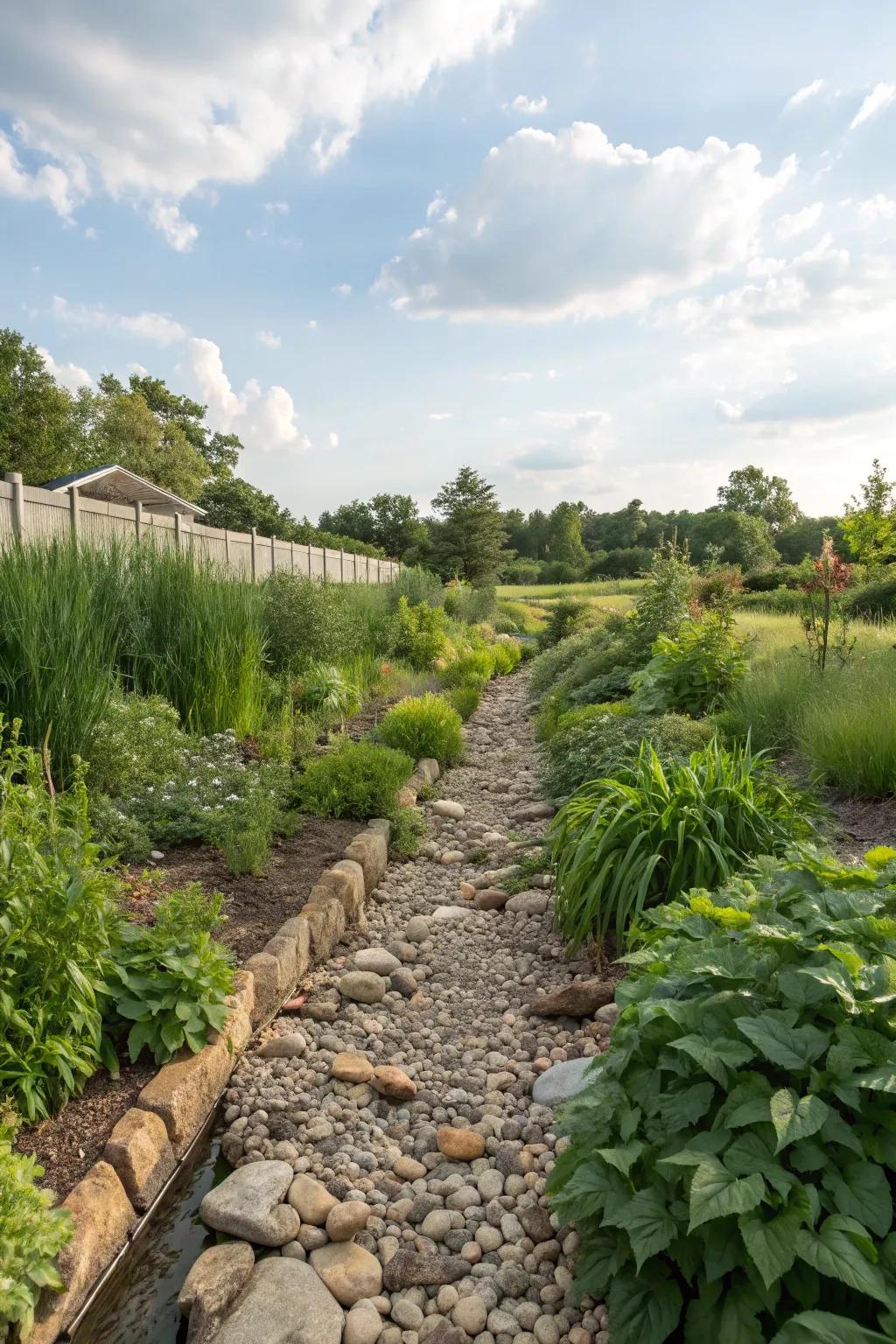
Creating rain gardens or dry riverbeds can transform problem areas into stunning features. I’ve seen these elements beautifully manage stormwater while adding a natural, artistic touch.
Useful items to consider:
- Decorative River Rocks: Enhance drainage with decorative river rocks, creating a natural look and effective water flow.
- Perennial Plant Seeds: Grow a lush rain garden with perennial seeds suited for various climates and stunning visual appeal.
- Garden Edging Stones: Define garden boundaries with edging stones for a polished look and effective erosion control.
9. Living Retaining Walls
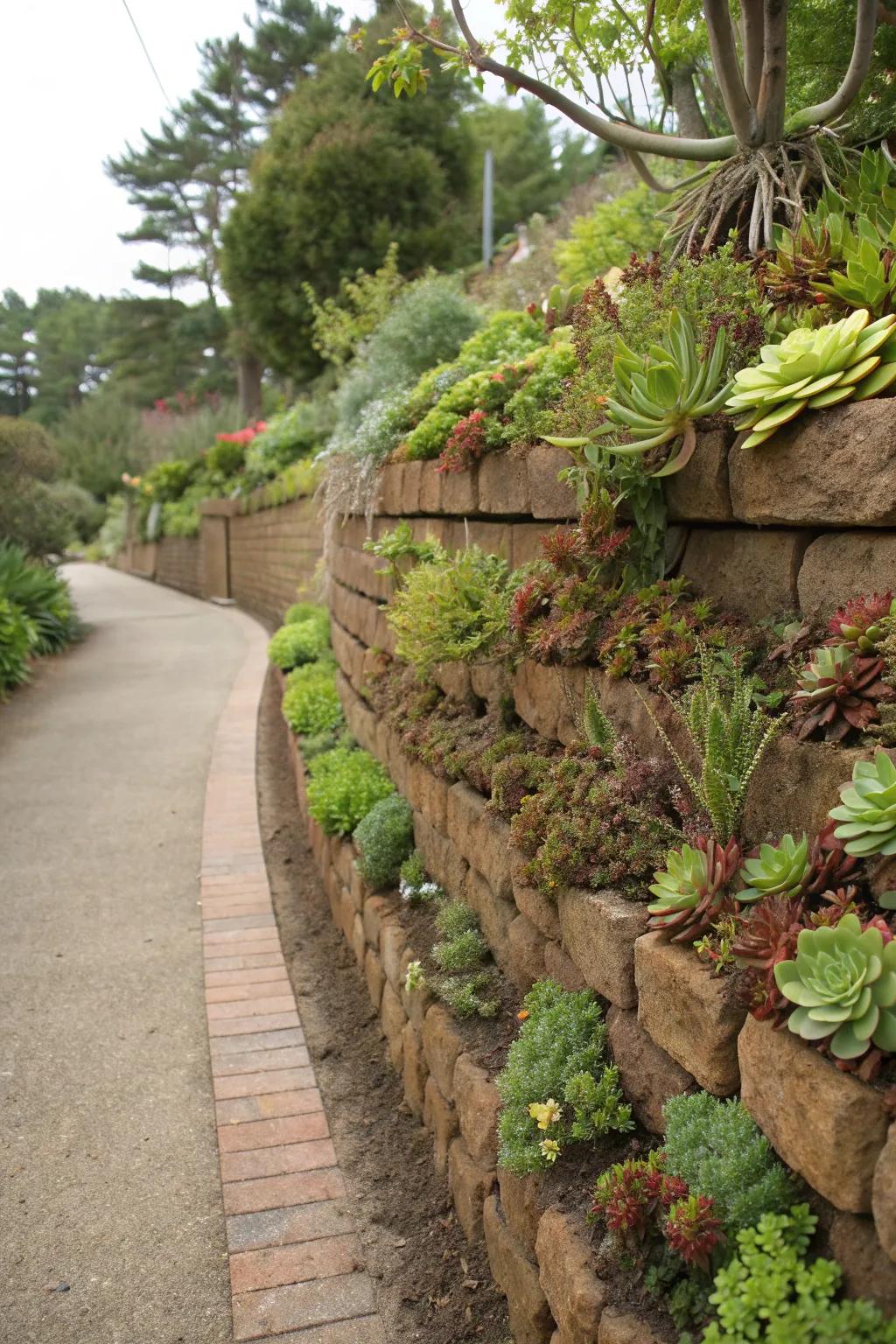
Living walls made of tightly planted succulents or moss can hold back soil with a splash of greenery. I’ve seen these used creatively to add a vertical element to small gardens.
Some handy options:
- Succulent Plant Assortment: Enhance your living retaining wall with a vibrant mix of easy-care succulent plants today.
- Vertical Garden Wall Planters: Transform your garden space with versatile vertical planters, perfect for your living wall project.
- Moss Ground Cover: Create lush, green retaining walls by integrating moss for natural beauty and soil retention.
10. Planting in Staggered Rows
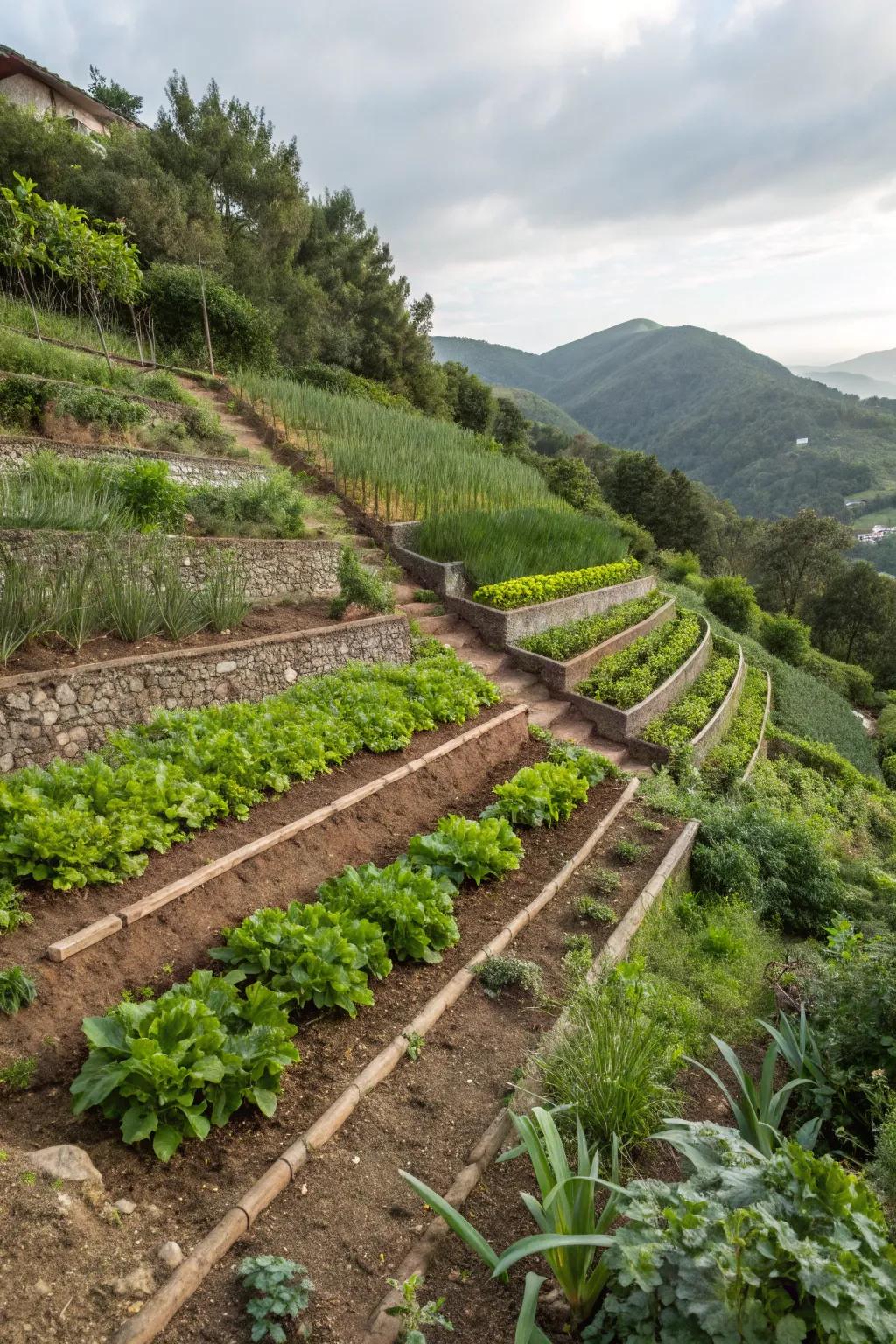
Staggered planting creates a natural barrier that slows down water flow. I often suggest this technique for hillside gardens to add both depth and erosion protection.
These products might be useful:
- Terrace Gardening Kits: Optimize your hillside garden with these kits, perfect for building staggered rows effortlessly.
- Erosion Control Fabrics: Enhance soil stability with erosion fabrics, ideal for hillside planting in staggered rows.
- Slope Stabilization Plants: Ensure strong root networks with these plants designed for slope and erosion control.
11. Ground Cover Galore
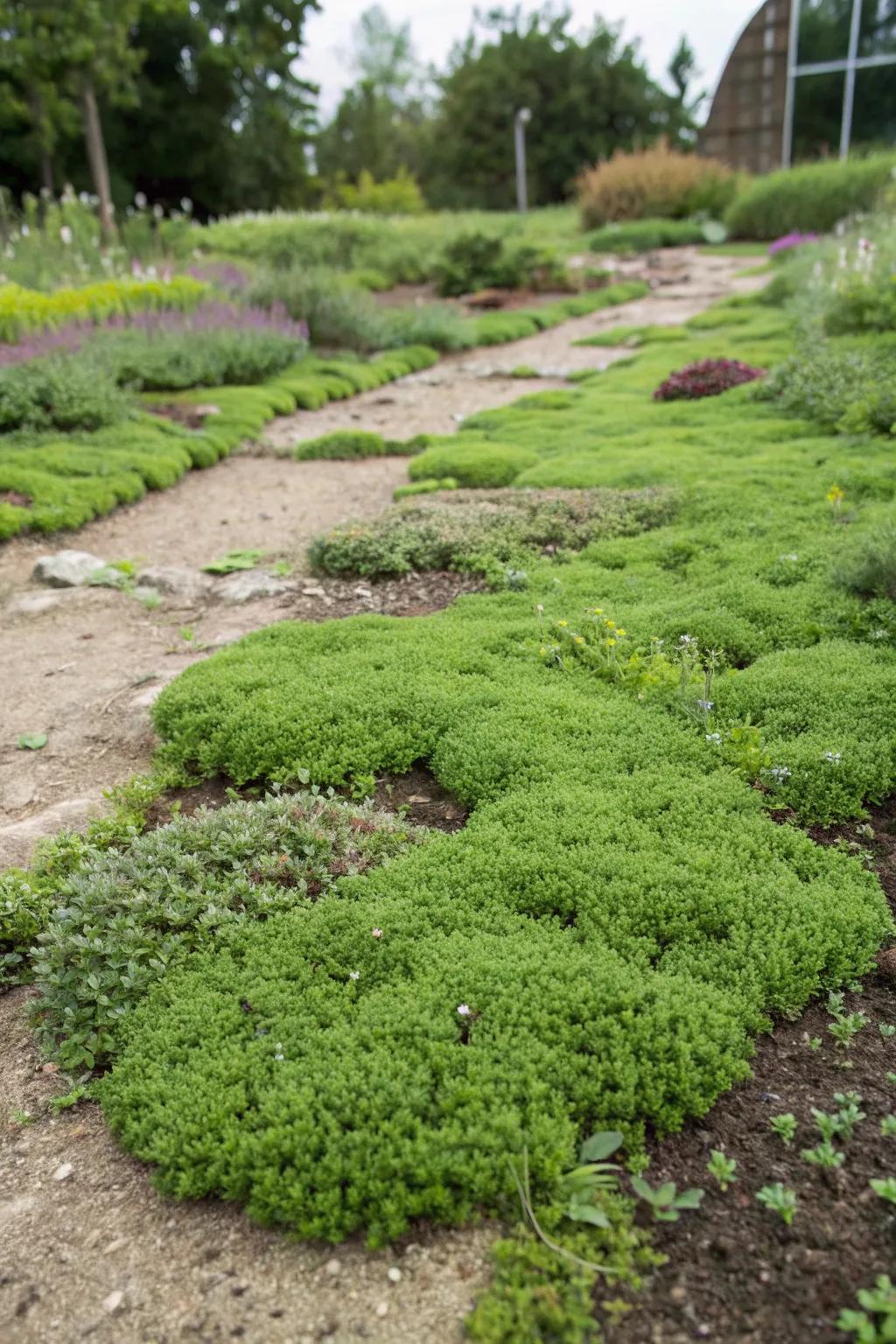
Spreading ground covers like creeping thyme can create a living carpet that protects your soil. These plants are my go-to for clients looking to cover large areas elegantly.
Maybe worth checking out:
- Creeping Thyme Seeds: Transform large areas with lush greenery. Plant creeping thyme seeds for an aromatic living carpet.
- Garden Weed Barrier Fabric: Install weed barrier fabric beneath your ground cover to keep your garden tidy and maintenance-free.
- Organic Mulch: Use organic mulch to enhance moisture retention and suppress weeds among your ground cover plants.
12. Mulch Magic
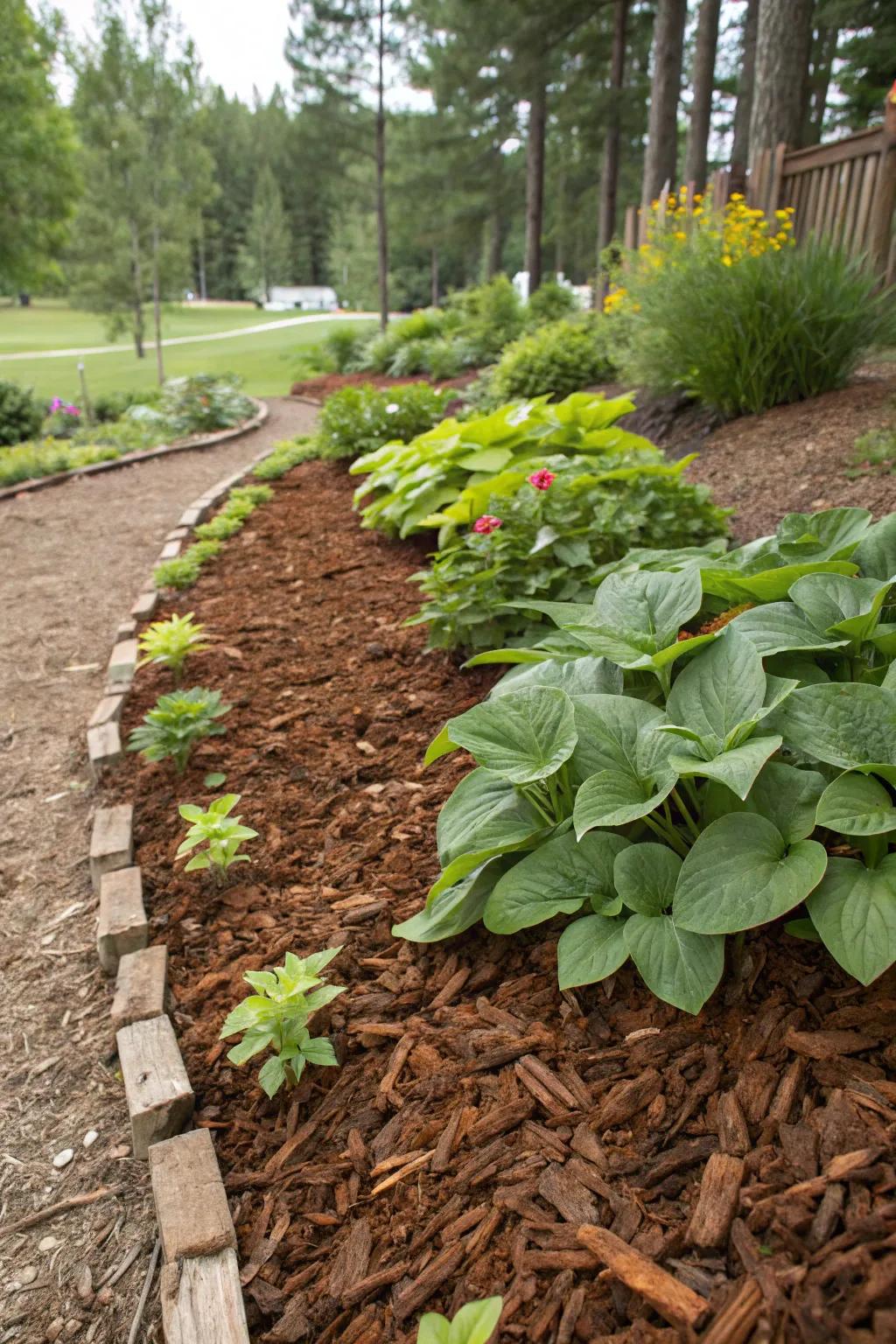
A thick layer of mulch is a simple yet effective way to protect soil from erosion. In my garden, I use pine bark mulch to keep soil in place and add nutrients over time.
Explore these options:
- Pine Bark Mulch: Enhance your soil stability and enrich nutrients with natural pine bark mulch today.
- Garden Border Edging: Define your mulch areas beautifully with durable and stylish garden border edging.
- Mulch Spreader Tool: Effortlessly apply mulch with ease using this handy mulch spreader tool.
13. Water Diversion Channels
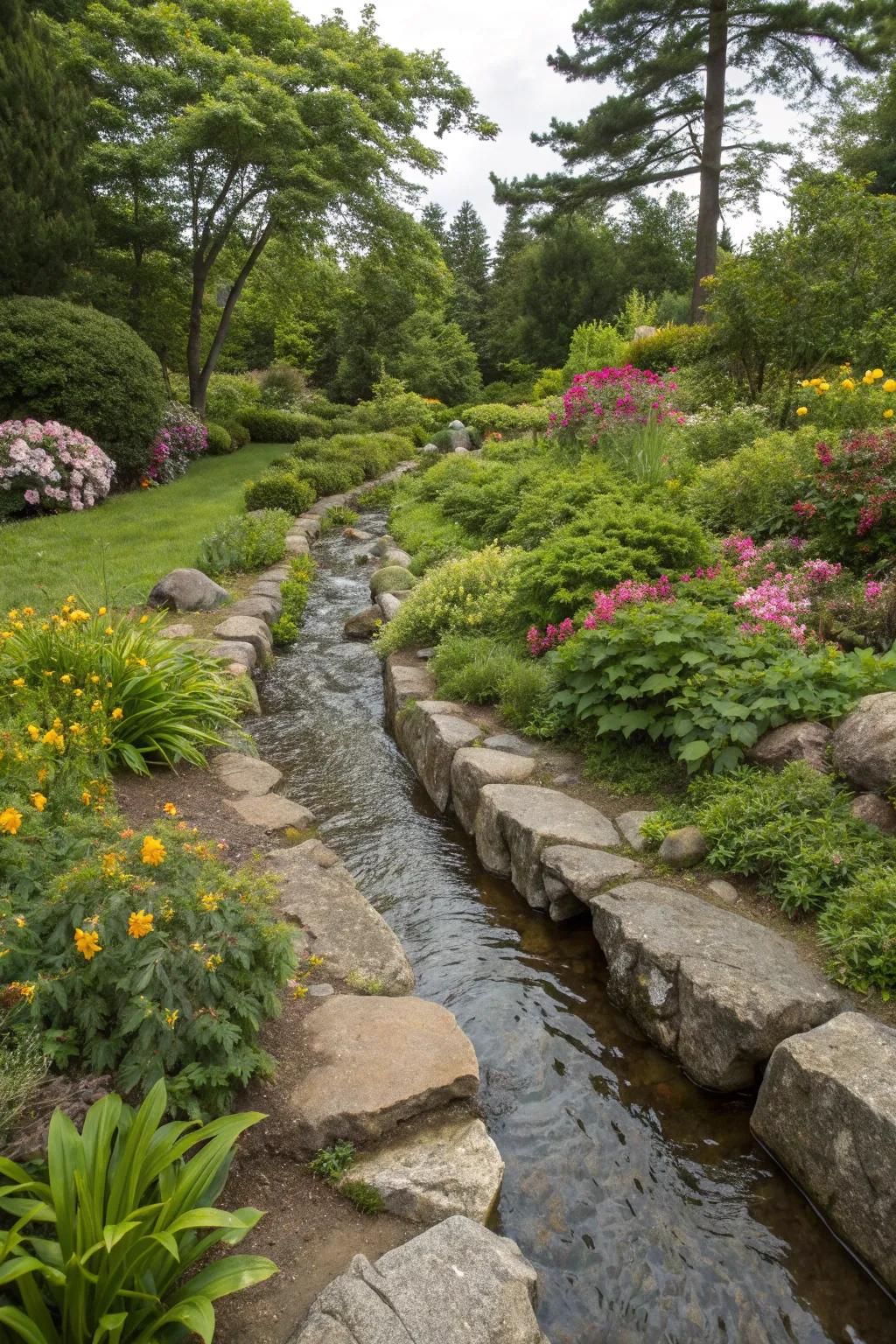
Diverting water with channels can keep your garden from turning into a swamp. I often design discreet channels lined with rocks to guide water away, adding both function and beauty.
Items that may come in handy:
- Landscape Edging Stones: Define water channels neatly with durable edging stones, enhancing both function and garden aesthetics.
- Heavy Duty Garden Shovel: Dig precise channels effortlessly with a robust garden shovel, making landscaping a breeze.
- Decorative River Rocks: Beautify water channels with decorative river rocks for an elegant, natural appeal.
14. Incorporating Swales
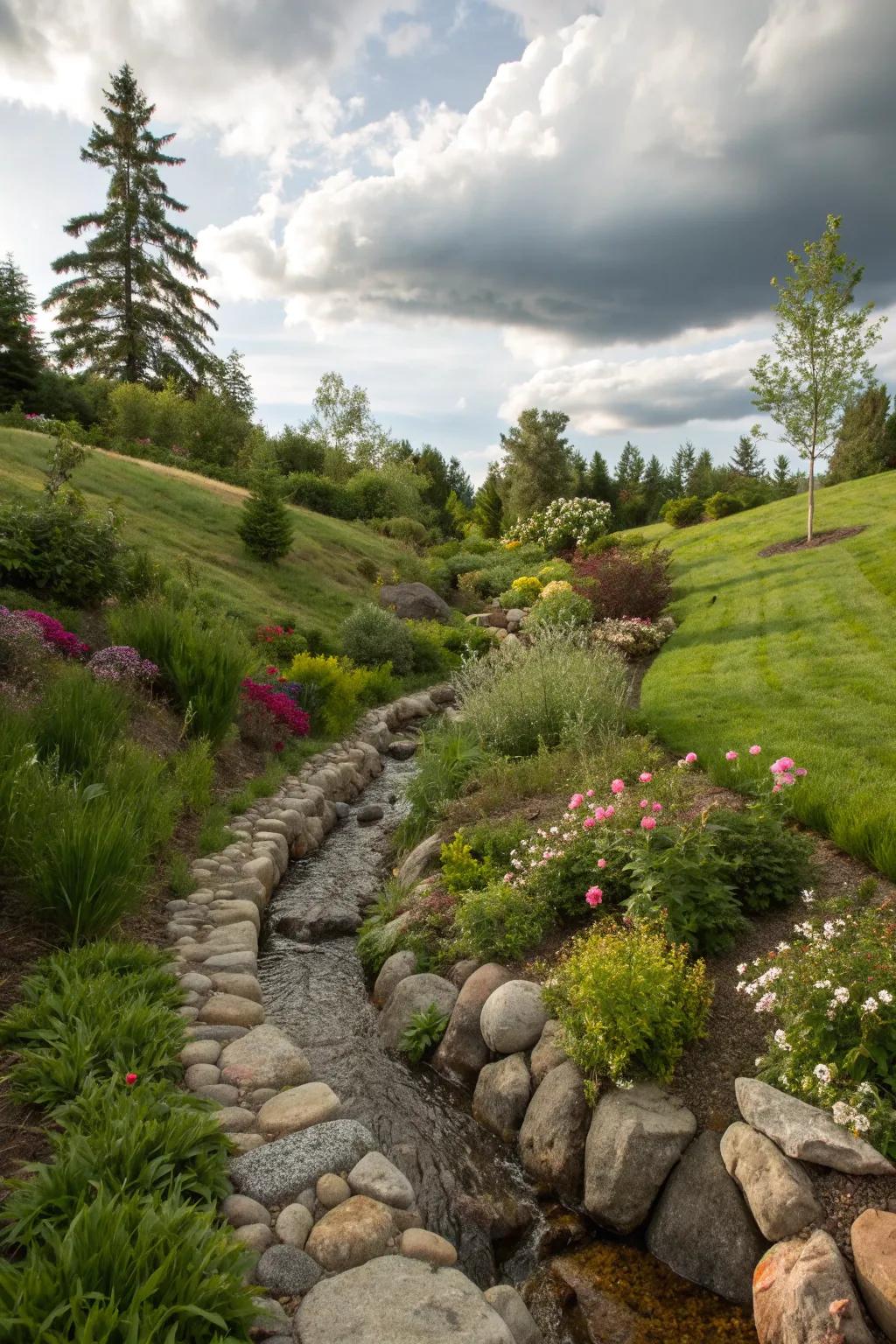
Swales are a subtle way to manage water flow and prevent erosion. By digging shallow ditches that guide water, I help clients create gardens that are both functional and beautiful.
Might be a good match:
- Landscape Fabric: Protect your swales from erosion by using durable landscape fabric for enhanced stability.
- River Stones: Enhance water flow aesthetics with river stones, adding natural beauty to your swales.
- Garden Shovel: Make digging swales easy with a high-quality garden shovel for precise landscaping work.
15. Use of Geotextiles
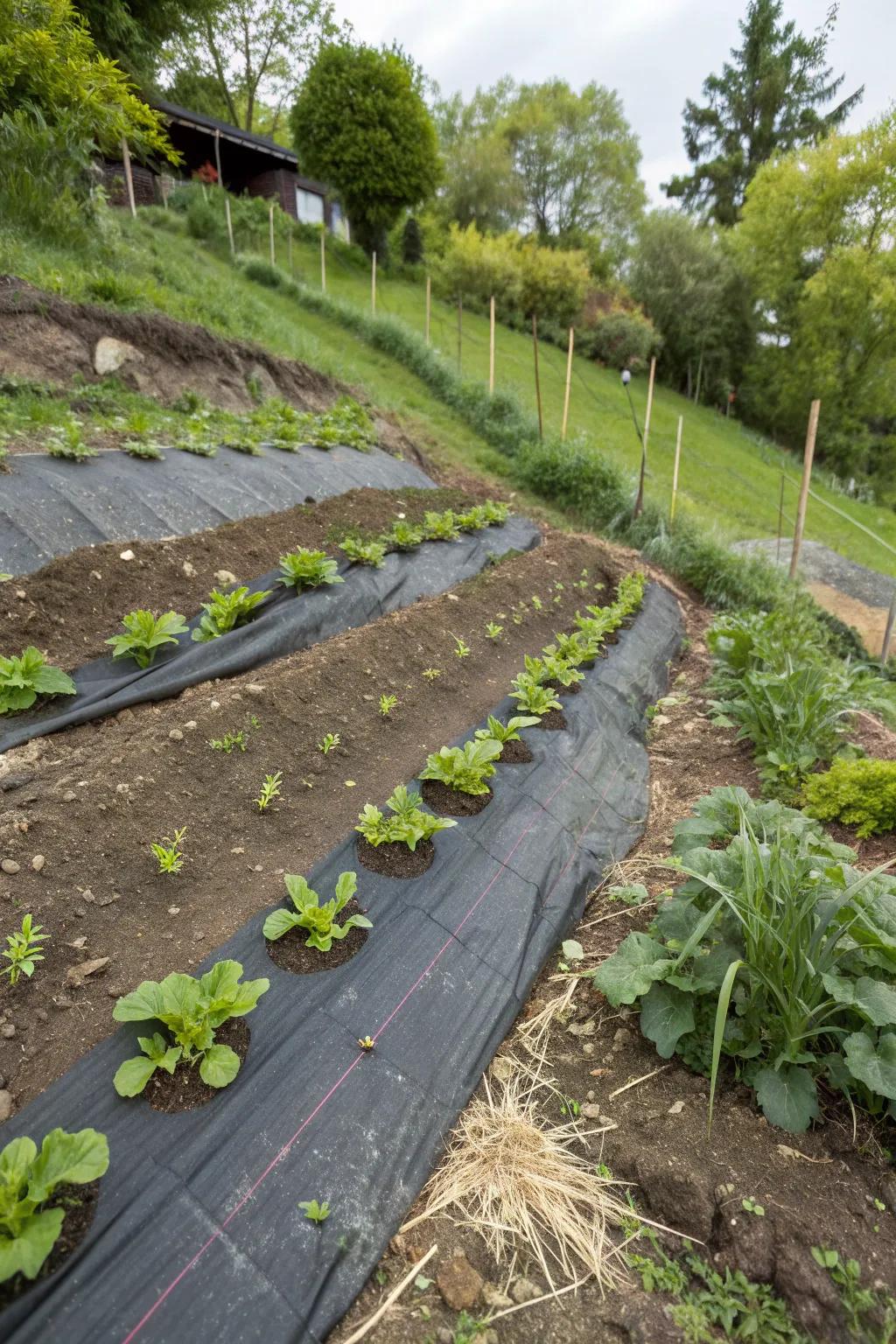
Geotextiles are like a superhero cape for your soil, providing reinforcement and support. For tricky slopes, I layer them under soil to help stabilize new plantings.
You might like:
- Heavy Duty Woven Geotextile Fabric: Strengthen and stabilize soil while preventing erosion on slopes effortlessly. Ideal for tricky landscapes.
- Geotextile Fabric Landscape Staples: Secure your geotextile fabric firmly to prevent shifting and ensure maximum effectiveness.
- Non-Woven Geotextile Roll: Enhance drainage and soil stabilization with this easy-to-install, durable geotextile roll.
16. Creating a Dry Well
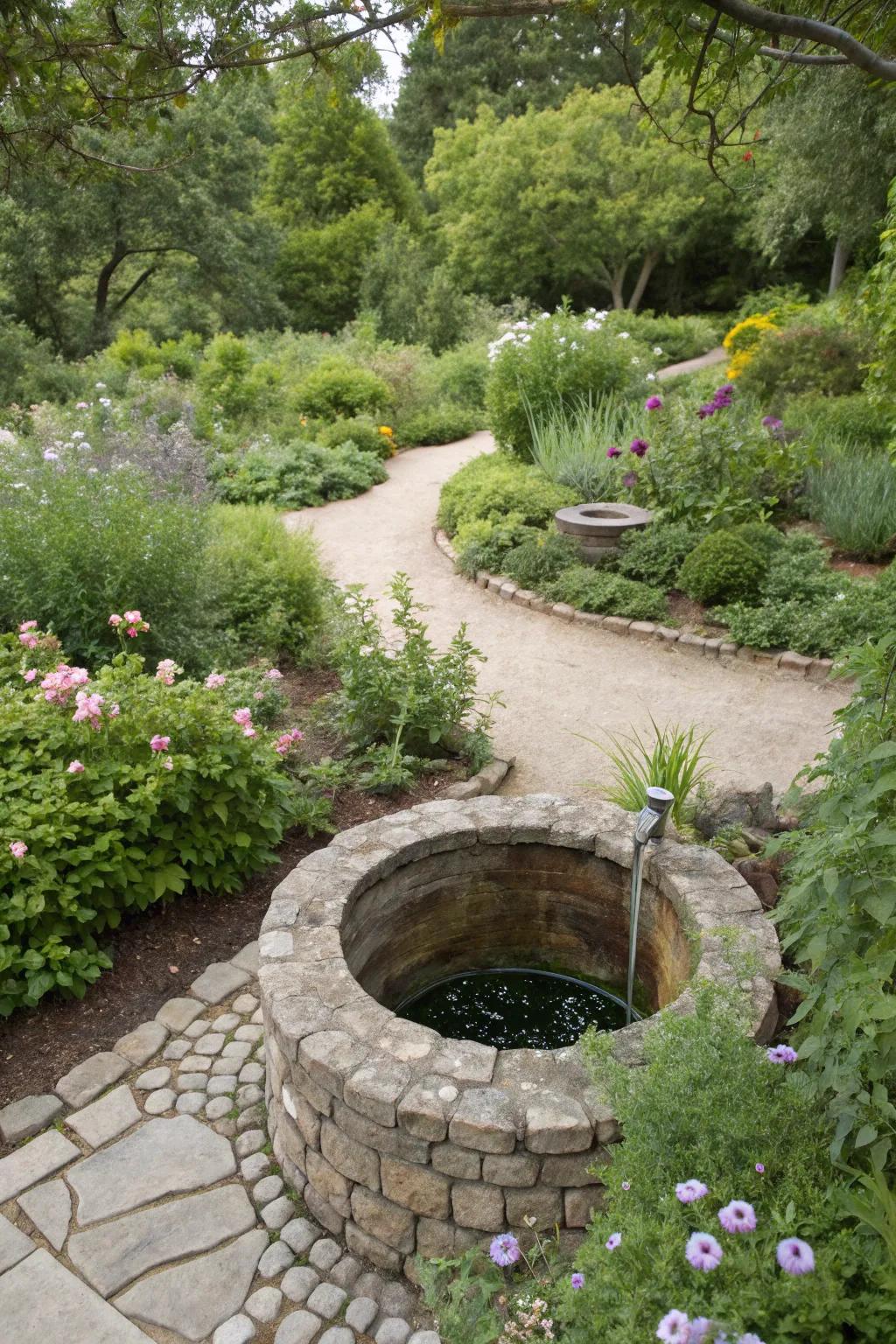
A dry well can capture excess water and allow it to slowly seep into the ground. It’s a hidden gem in my garden that helps manage heavy rains without washing away soil.
These products might help:
- Permeable Landscape Fabric: Install permeable landscape fabric to prevent soil erosion while allowing water to penetrate efficiently.
- Gravel and Stone for Drainage: Use gravel and stone to enhance drainage and maintain the structure of your dry well.
- Plastic Dry Well Kit: Set up a plastic dry well kit to effectively manage excess rainwater in your garden.
17. Erosion Control Blankets
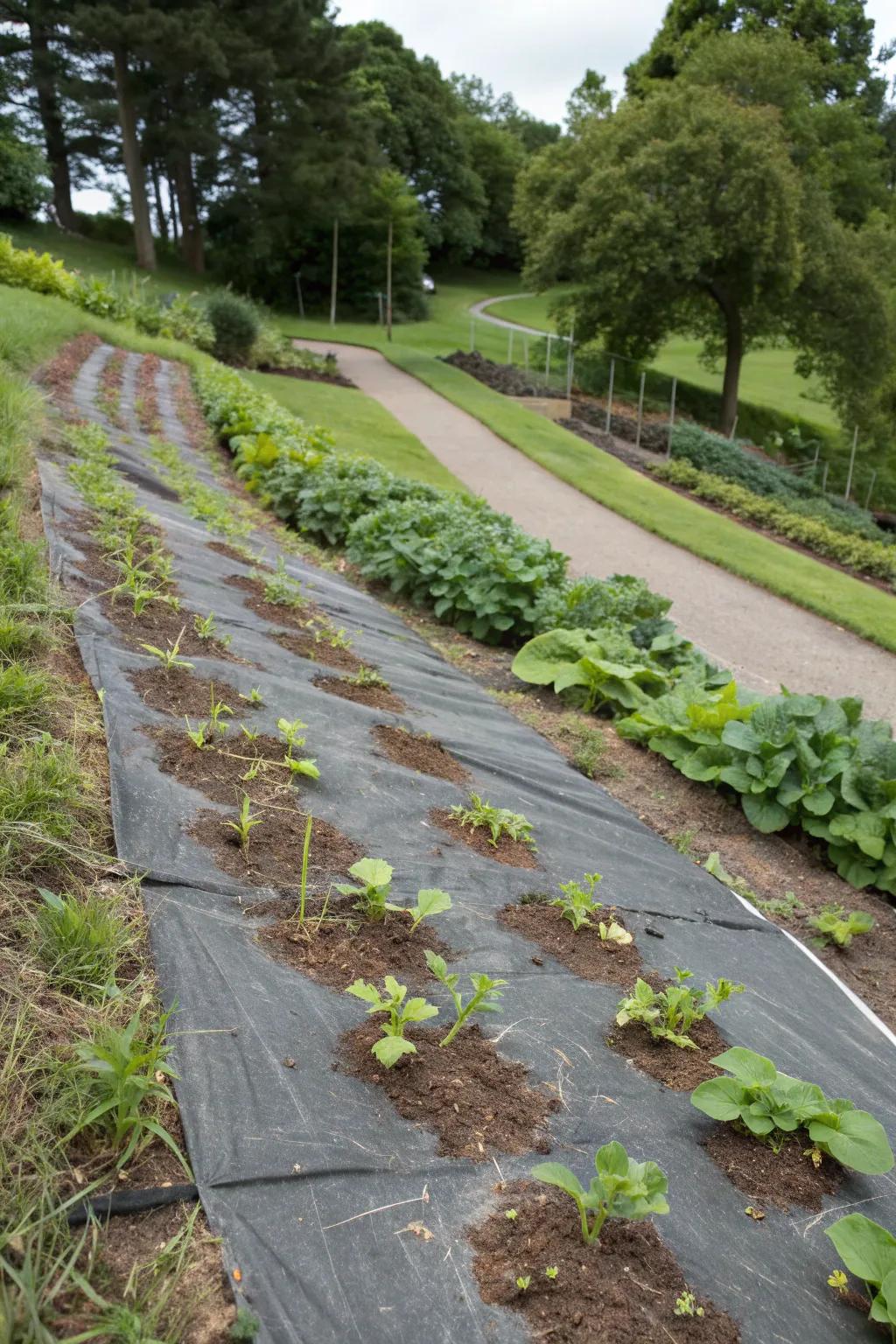
Erosion control blankets are like a cozy blanket for your soil, helping it stay put. I recommend them for new plantings on slopes to give roots a chance to establish.
You might give these a try:
- Biodegradable Erosion Control Blanket: Keep your soil stable and support new plantings with this eco-friendly erosion control solution.
- Coconut Coir Erosion Mat: Protect slopes effectively with natural coir mats, aiding root establishment in erosion-prone areas.
- Seed Germination Erosion Blanket: Enhance seed growth on slopes with this user-friendly erosion control blanket for better vegetation.
18. Pathways and Stepping Stones
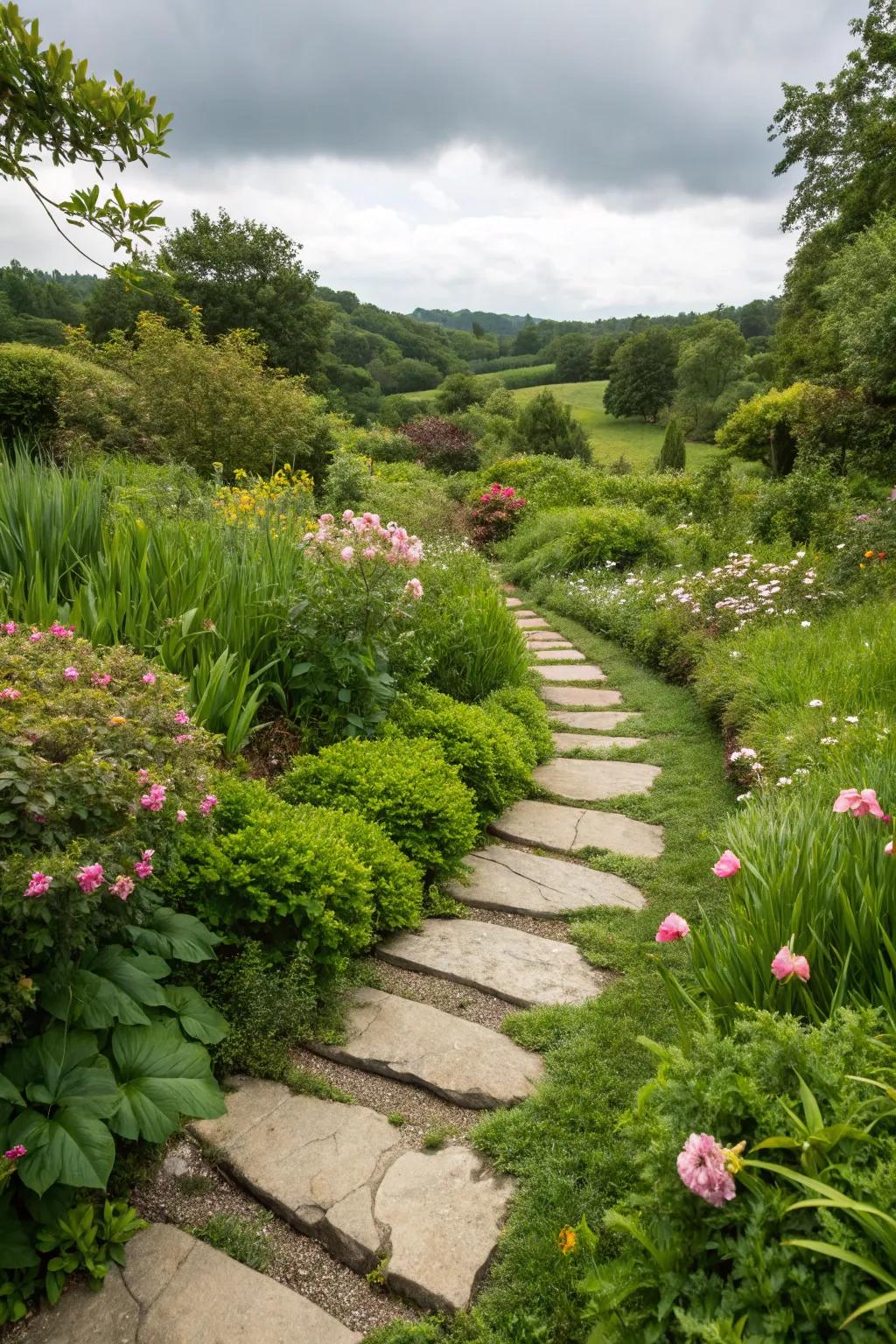
Paths can do more than just lead you through the garden; they can also direct water flow. I love incorporating stepping stones to create a charming, erosion-friendly path.
Consider these options:
- Natural Stone Stepping Stones: Elevate your garden path while efficiently directing water flow with natural stone stepping stones.
- Ground Cover Plant Seeds: Enhance erosion control by planting resilient ground cover between stepping stones on your path.
- Geotextile Landscape Fabric: Prevent soil erosion under pathways by installing durable geotextile landscape fabric beneath stepping stones.
19. Rain Barrels for Water Collection
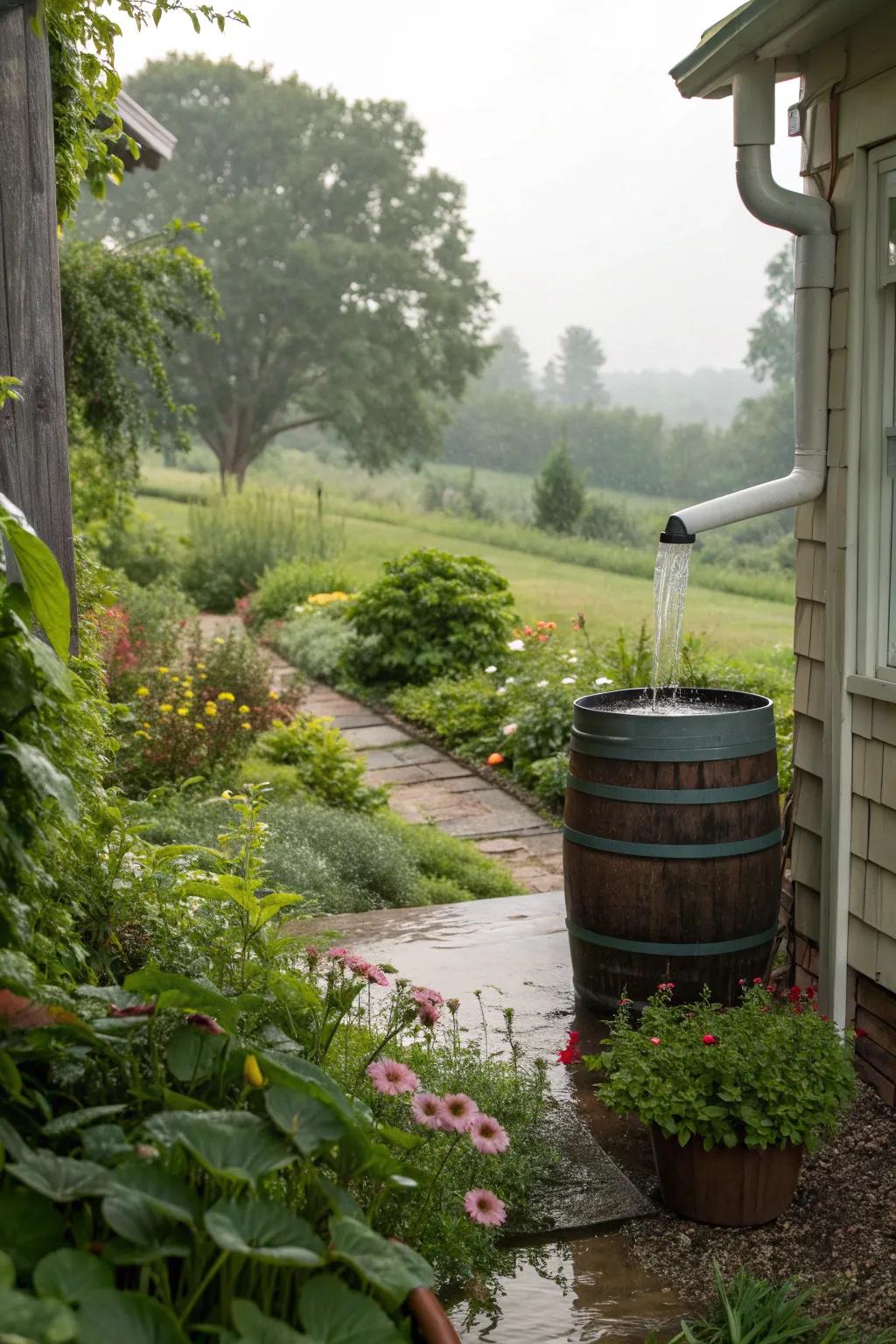
Rain barrels are a charming way to collect water and reduce runoff. In my backyard, they not only help with erosion control but also give me a free water source for dry spells.
A few choices to try:
- Wooden Look Rain Barrel: Enhance your garden landscape while capturing water with this stylish wooden look rain barrel.
- Downspout Diverter Kit: Upgrade your rain barrel setup with an efficient downspout diverter for seamless water collection.
- Decorative Planter for Rain Barrels: Add charm to your rain barrel with a decorative planter that fits perfectly on top.
20. Drip Irrigation
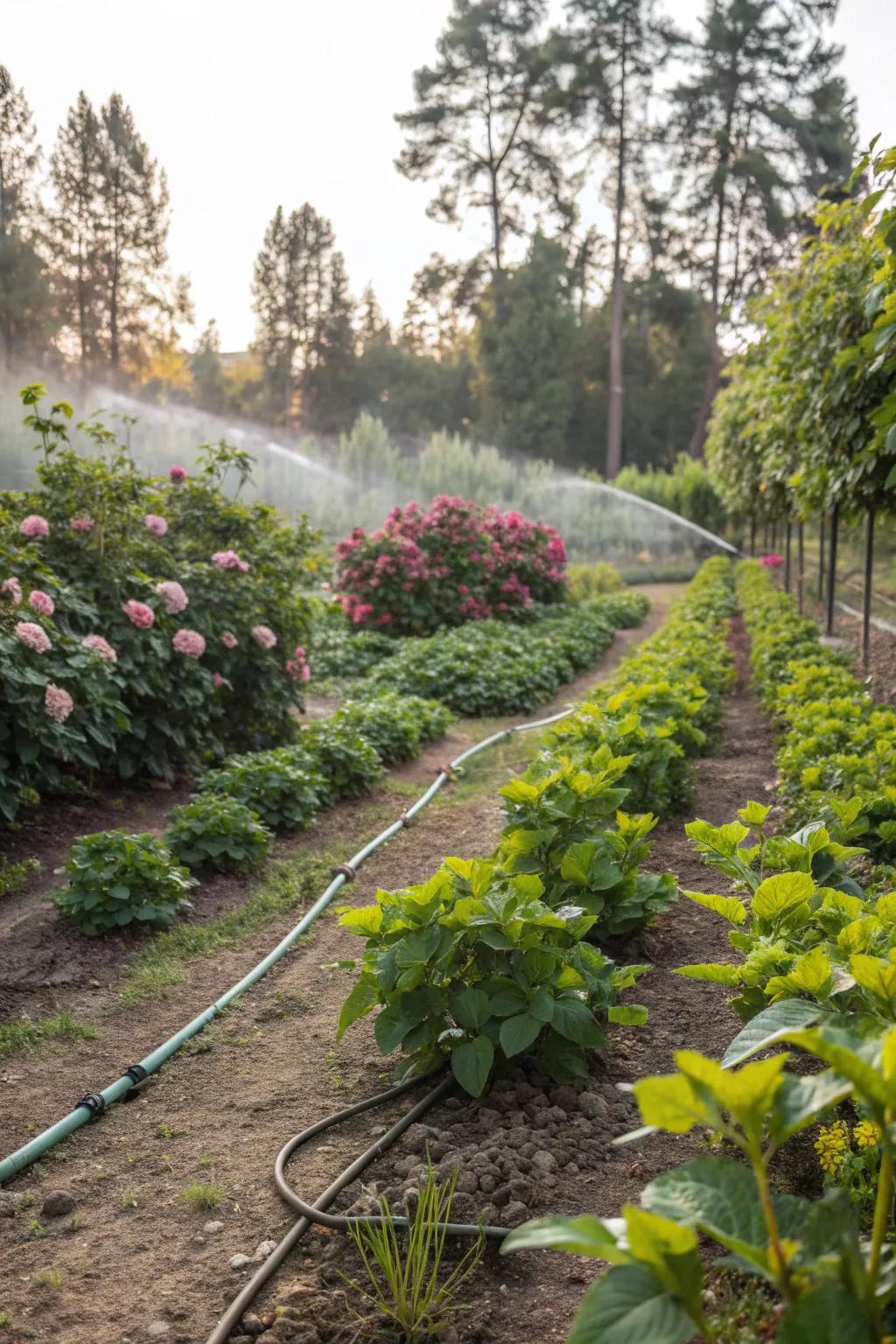
Drip irrigation is my secret weapon for efficient watering without contributing to erosion. It delivers water right to the roots, ensuring your plants get what they need without runoff.
Try these:
- Complete Drip Irrigation Kit: Install a complete drip system to efficiently water plants and minimize erosion. Easy setup included.
- Adjustable Drip Emitters: Use adjustable emitters for precise watering, ensuring your plants thrive without excess runoff.
- Drip Irrigation Tubing: Lay drip tubing across garden beds, delivering water directly to roots. Durable and efficient.
